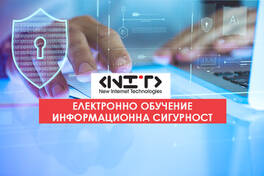
Hello, friends! Now I'm going to tell you something very important - why phishing is still such a big threat and how to fight it. First of all, we need to understand - it's not just a technology problem, it's also an education and culture problem. So if you're ready for some serious talk, let's get started.
Phishing - the persistent threat: why is it so dangerous?
Unfortunately, phishing continues to be a threat because people who engage in phishing are becoming more sophisticated. With technological advances in recent years, new methods of manipulation and crime have emerged. Most worryingly, however, many people are still unaware of how phishing works and how to prevent it.
New trends in phishing attacks
As technology evolves and cybersecurity increases, phishing has also evolved and adapted. New technologies, social trends and digital changes have led to the emergence of new methods and tactics that malicious actors use in phishing attacks. The question here is not whether phishing has changed its tactics, but rather how much. With the evolution of social networks, hackers can now use the personal information we share on the internet to build convincing phishing scenarios. In addition, they have learned to use increasingly sophisticated techniques, including Spear Phishing (specialized attacks targeting specific individuals or organizations) and Whaling Phishing (phishing targeting senior executives or key individuals).
- Stopping Security Filters: In order to overcome the automated security filters used by email providers and security software, hackers have started using entirely new sources and infrastructure to spread phishing messages. This includes the use of legitimate but compromised websites and domains to make it appear that messages are coming from trusted sources.
- Leveraging AI and machine learning: phishers are taking advantage of technological innovations such as artificial intelligence and machine learning to create personalised and convincing phishing attacks. AI can study a user's preferences, interests, and online behavior to create a relevant phishing message that looks more genuine and easy to click.
- Social engineering and sneaky methods: Hackers often take advantage of social engineering to manipulate the emotional state of the user. They use fear, curiosity, sympathy and other emotions to get them to send personal data or click on a malicious link.
- Spear and Whaling Phishing: Spear and Whaling Phishing attacks have become increasingly popular. Spear phishing attacks directly target specific individuals or organizations using information gathered from social networks or other sources. Whaling phishing targets senior executives or key individuals because they are more likely to reveal valuable information.
- Fake profiles and accounts: Hackers use fake social media profiles or email addresses that look like trusted individuals to convince users to reveal their details or passwords.
- Phishing via SMS and social networks: recently there has been an increase in phishing attacks via SMS or social networking messages. Malicious actors send links or disguise malicious code in short messages or chats that can redirect users to fake websites or install malware.
To effectively defend against new trends in phishing attacks, we need to be vigilant, educate ourselves and our colleagues to recognize phishing messages, and stay up-to-date with the latest measures and technologies. One key strategy is to rely not only on technology, but also education and culture to help improve cybersecurity awareness and reduce the success rate of phishing attacks.
View courses suitable for initial and follow-up training for Cyber Security and Social Engineering course
The new methods of phishing protection
The first step is improving the security of our technology. Set up spam filters on your e-mail, install secure browsers and antivirus software, and update your software regularly. But technological measures can only get us so far.
New methods of protection from phishing attacks are evolving to deal with the sophisticated and sophisticated techniques of hackers. These approaches include a combination of technological solutions and educational approaches to help consumers and organizations protect themselves more effectively from this threat.
1. Using AI and machine learning to detect phishing
As mentioned earlier, hackers are using artificial intelligence and machine learning to perfect phishing attacks. However, these same technologies can also be used to detect phishing messages. AI can analyze thousands of emails and messages to detect the characteristics and indicators of phishing attacks. This helps secure solutions detect and block fake messages before they reach users.
2. Two Factor Authentication (2FA)
2FA is an additional layer of protection that requires users to provide two or more independent identification factors. This can be something the user knows (a password), something the user owns (a mobile phone), and/or something the user is (a fingerprint). 2FA complicates the ability for hackers to reach users' data even if they get caught in a phishing attack.
3. Cloud-based secure solutions
Using cloud-based secure solutions can help organizations protect themselves and their employees from phishing attacks. These solutions can scan and analyze emails, links and attachments to identify potential risks and malicious content.
4. Diverse educational programs and simulations
The approach to training and raising awareness of phishing attacks plays a critical role in protection. Organizations can provide a variety of educational programs, courses and simulations to train employees on how to recognize phishing attacks and how to act cautiously. Simulations allow employees to practice their skills in a real-world or controlled scenario without risking real protection.
5. Custom Protection
Increased personalization of protection can help users control and manage their cybersecurity. Email account management tools and notifications of unusual activity can help users know when attempts are made to breach their accounts.
6. Malware detection systems
The use of malware detection systems (IDS/IPS) is an effective way to prevent phishing attacks from entering. These systems are capable of identifying and blocking malicious traffic, including phishing messages, before they reach the user's network.
Combining technical solutions and educational approaches can increase the effectiveness of protection against phishing attacks. Applying these new methods can help users and organizations deal with the ever-evolving threat and keep their cybersecurity secure
The role of education in phishing protection
The important next step in technology protection is education. Most people are simply not aware of the different types of phishing attacks and how they can be avoided. Education on this issue needs to become a priority for both individual users and organizations.
The role of education in protecting against phishing attacks is of utmost importance. Education and raising awareness among users is a key factor in creating a more secure cyber environment. One of the biggest benefits of education is that it can help prevent phishing attacks before they even happen.
Knowledge of phishing indicators: Educated users are more likely to recognize typical indicators of phishing attacks. These include strange email addresses, unexpected emails from unknown sources, links that lead to fake websites, spelling or grammar errors, and more.
Recognising social engineering: phishers often use social engineering to manipulate people's emotions and behaviour. Educated consumers are more likely to recognize social engineering tactics and be more careful when receiving suspicious messages or requests for information.
Privacy: educated consumers are more aware of the importance of protecting their personal data and information. They are more likely to be cautious when sharing sensitive information and passwords, making them less likely to fall victim to phishing attacks.
Informing about new trends: education should be an ongoing process as hackers are constantly developing new methods and techniques. Trained users are able to adapt to new trends and implement more effective methods to defend against changes in phishing attacks.
The role of education and training in organizations:
In organizations, education plays a particularly important role in protecting against phishing attacks. Trained employees are key protectors of companies, as they are often the target of spear and wale phishing attacks. Staff education includes:
- Training on protective measures: training employees on basic protective measures, such as two-factor authentication, phishing message recognition and suspicious activity reporting, can increase an organization's overall cybersecurity.
- Testing and Simulations: Conducting simulations and tests of phishing attacks can help employees develop the skills to recognize deceptive messages and prepare for real-world scenarios.
- Maintaining Awareness: Constant awareness of new trends in phishing attacks and the dissemination of threat prevention information is critical to protecting the organization.
In conclusion, education plays a critical role in protecting against phishing attacks. By raising awareness and educating users and employees, we can increase the effectiveness of the fight against phishing attacks and create a safer cyber environment for all.
What does this mean for business culture?
The role of education in business culture when it comes to protecting against phishing attacks is critical. In highly developed organizations with a cybersecurity culture, phishing protection education is one of the top priorities. Here are some key aspects of the role of education in business culture to protect against phishing:
Creating a culture of safety: education plays a key role in creating a culture of cyber security within an organisation. When associates are aware and knowledgeable about cybersecurity, they are more alert and better prepared to recognize and prevent phishing attacks.
Employee training: organisations should provide systematic training to their employees on phishing attacks, how to recognise them and how to act on suspicious messages. Regular training will help staff to always be aware of new phishing methods and stay up-to-date in cyber security.
Simulations and tests: organisations can run simulations and tests of phishing attacks to assess the effectiveness of training and identify weaknesses. These simulations are a valuable tool for training and preparing employees for real-world scenarios.
Prioritise cybersecurity: business culture needs to embrace cybersecurity as an important and inalienable aspect of business processes. When cybersecurity is embedded in an organization's values and strategy, it increases employee engagement and motivates them to be active participants in protecting against phishing attacks.
Reporting and cooperation: education should encourage employees to be responsible and proactive in reporting suspicious activity. This includes cooperating with the cybersecurity department and other colleagues when suspicious messages or activities are observed.
Constantly update knowledge: phishing technology and techniques are constantly evolving, so cybersecurity education needs to be constantly updated. The culture of the business must support the continuous learning and improvement of employee knowledge.
Education plays a central role in protecting organizations from phishing attacks. By investing in employee education and helping to create a culture of cyber security, organisations can increase the effectiveness of their defences and reduce the risk of phishing attacks.
This undoubtedly implies a change in the culture of the business. Internet security must become a top priority and all associates must be trained on how to prevent, recognize and report phishing attacks. Only then can we hope to be more effective in combating this persistent threat.
So my friends, be careful and never forget - your protection is in your own hands. Let education and adaptation of our culture be our weapons in this battle.







